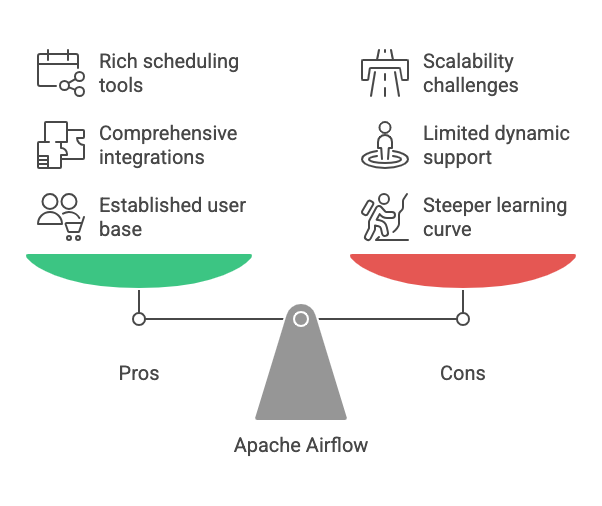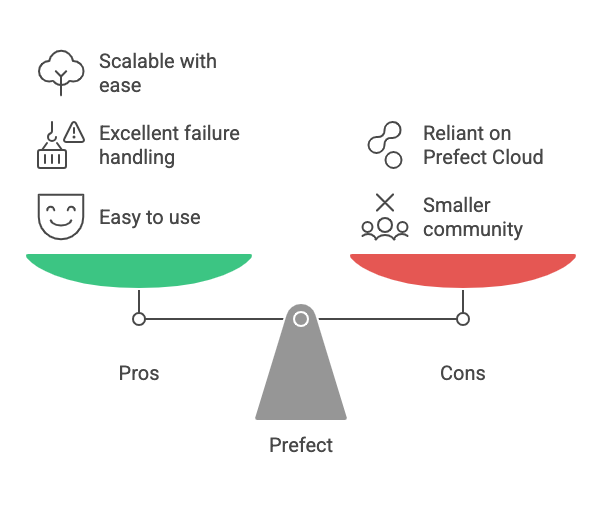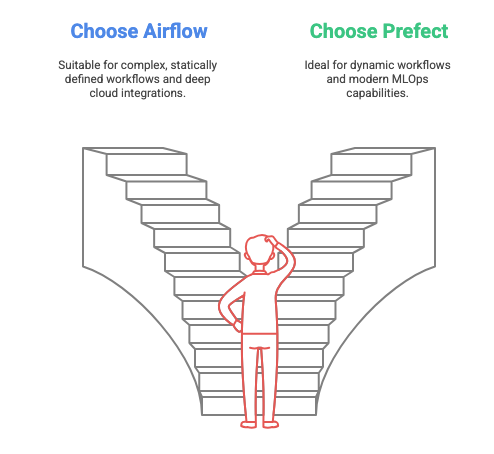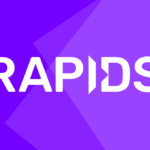In the rapidly evolving landscape of data engineering, choosing the right workflow orchestration tool is crucial. The debate between Prefect vs. Airflow has gained even more traction as both tools adapt to modern needs. This 2025 perspective dives deep into their features, pros and cons, and suitability for various use cases, helping teams make informed decisions about which platform to adopt.
Key Considerations for 2025
- Cloud-Native Focus: Cloud adoption continues to accelerate. Tools with strong cloud-native architectures and seamless integrations with cloud services will gain an edge.
- MLOps Integration: The demand for robust MLOps pipelines is increasing. Tools that facilitate seamless integration with ML model training, deployment, and monitoring are highly sought after.
- Ease of Use and Developer Experience: User experience and developer productivity are crucial. Tools that simplify workflow authoring, debugging, and maintenance will be favored.
- Community and Ecosystem: A vibrant community and a rich ecosystem of integrations and plugins are essential for long-term sustainability and adoption.
Apache Airflow in 2025
- Maturity and Stability: Airflow remains a mature and stable platform with a large, active community.
- Cloud Focus: Airflow has strengthened its cloud presence with improved support for cloud providers like AWS, GCP, and Azure.
- MLOps Enhancements: Ongoing efforts to enhance MLOps capabilities, including better integration with ML platforms and support for advanced ML use cases.
- Challenges:
- Complexity: Airflow’s complexity can still pose challenges for new users and smaller teams.
- Dynamic Workflows: While improvements have been made, dynamic workflow authoring can still be cumbersome compared to newer platforms.
Prefect in 2025
- Cloud-Native Leadership: Prefect has embraced a cloud-first approach, offering a robust and scalable cloud platform.
- Developer Experience: Prefect continues to prioritize developer experience with its Pythonic API and focus on ease of use.
- MLOps Focus: Prefect is well-positioned for MLOps with its focus on dynamic workflows, task retries, and integrations with popular ML frameworks.
- Growth and Maturity: The Prefect community is growing, but it still lags behind Airflow’s in terms of size and breadth of community support.
Core Comparisons
1. Workflow Definition
Airflow:
Uses Python scripts to define workflows via DAGs.
Requires explicit scheduling logic.
from airflow import DAG
from airflow.operators.python_operator import PythonOperator
from datetime import datetime
def my_task():
print("Hello, Airflow!")
with DAG(dag_id='my_dag', start_date=datetime(2025, 1, 1), schedule_interval='@daily') as dag:
task = PythonOperator(
task_id='print_hello',
python_callable=my_task
)Prefect:
Workflows are defined as Python functions using decorators
Supports parameterized and dynamic workflows more seamlessly.
from prefect import Flow, task
@task
def my_task():
print("Hello, Prefect!")
with Flow("my_flow") as flow:
my_task()
flow.run()2. Scheduling
- Airflow:
- Built-in scheduler using cron-like syntax.
- Requires deployment and management of a scheduler process.
- Complex configurations for dynamic schedules.
- Prefect:
- Offers both local and Prefect Cloud scheduling.
- Dynamic scheduling with Python functions or external triggers.
- Minimal setup required for Prefect Cloud users.
3. Scalability and Performance
- Airflow:
- Requires a centralized database (e.g., PostgreSQL, MySQL) and a queueing system like Celery.
- Horizontal scaling requires careful setup (worker nodes, Redis).
- Performance may degrade with large numbers of tasks.
- Prefect:
- Decentralized architecture using an agent-worker model.
- Scales effortlessly across environments (local, Kubernetes, AWS, etc.).
- Prefect Cloud provides an out-of-the-box scalable backend.
4. Monitoring and Observability
- Airflow:
- Basic web UI for DAG/task status and logs.
- Requires external tools for advanced monitoring (e.g., Prometheus, Grafana).
- Prefect:
- Rich observability built into Prefect Cloud.
- Automatic task retries, failure notifications, and dashboards.
- Log aggregation and timeline visualization.
5. Community and Ecosystem
- Airflow:
- Mature community with extensive documentation.
- Rich ecosystem of integrations and plugins (AWS, GCP, Snowflake, etc.).
- Long learning curve for newcomers.
- Prefect:
- Growing but smaller community.
- Easy-to-follow documentation and support.
- Focused integrations with modern tools and services.
6. Failure Handling
- Airflow:
- Error handling often involves manual retries or defining specific failure logic in DAGs.
- Partial observability of errors and logs.
- Prefect:
- Emphasizes “defensive orchestration.”
- Automatically retries failed tasks based on customizable logic.
- Enhanced visibility into task states and root causes.
7. Deployment Models
- Airflow:
- Open-source self-hosted setup.
- Managed options available (e.g., AWS MWAA, Google Cloud Composer).
- Prefect:
- Offers both open-source self-hosted and cloud-based solutions.
- Prefect Cloud simplifies deployment and scaling.
Pros and Cons
Apache Airflow

Pros:
- Established, widely adopted with a large user base.
- Comprehensive integrations and plugins.
- Rich scheduling and dependency management.
Cons:
- Steeper learning curve.
- Limited support for dynamic workflows.
- Requires more effort for scalability and observability.
Prefect

Pros:
- Easy to use with dynamic workflows and parameters.
- Excellent failure handling and observability.
- Scalable with minimal effort, especially with Prefect Cloud.
Cons:
- Smaller community and ecosystem.
- Heavily reliant on Prefect Cloud for advanced features.
Emerging Trends for 2025
- Serverless Orchestration: Tools leveraging serverless technologies to simplify deployment and reduce operational overhead.
- AI/ML-Powered Orchestration: Advancements in AI/ML-powered features like automated workflow optimization and anomaly detection.
- Increased Focus on Observability: Tools with advanced observability features, such as real-time monitoring, debugging, and root cause analysis, will gain traction.
Choosing the Right Tool

Choose Airflow if:
- You require a mature, battle-tested platform with extensive community support.
- You have complex, statically defined workflows.
- You prioritize deep integrations with specific cloud providers.
Choose Prefect if:
- You prioritize developer experience, ease of use, and dynamic workflows.
- You need a cloud-native platform with strong MLOps capabilities.
- You value a modern, user-friendly interface.
Conclusion
Both Apache Airflow and Prefect are powerful tools for data workflow orchestration. Airflow excels in established, large-scale environments with complex scheduling needs. Prefect offers a modern, user-friendly approach with superior fault tolerance and dynamic workflows.
Your choice will depend on your team’s expertise, scalability needs, and the complexity of your workflows. For organizations seeking a fresh start or those prioritizing modern features, Prefect may be the better choice. However, for enterprises deeply rooted in legacy systems or requiring robust community support, Airflow remains a strong contender.





Leave a Reply